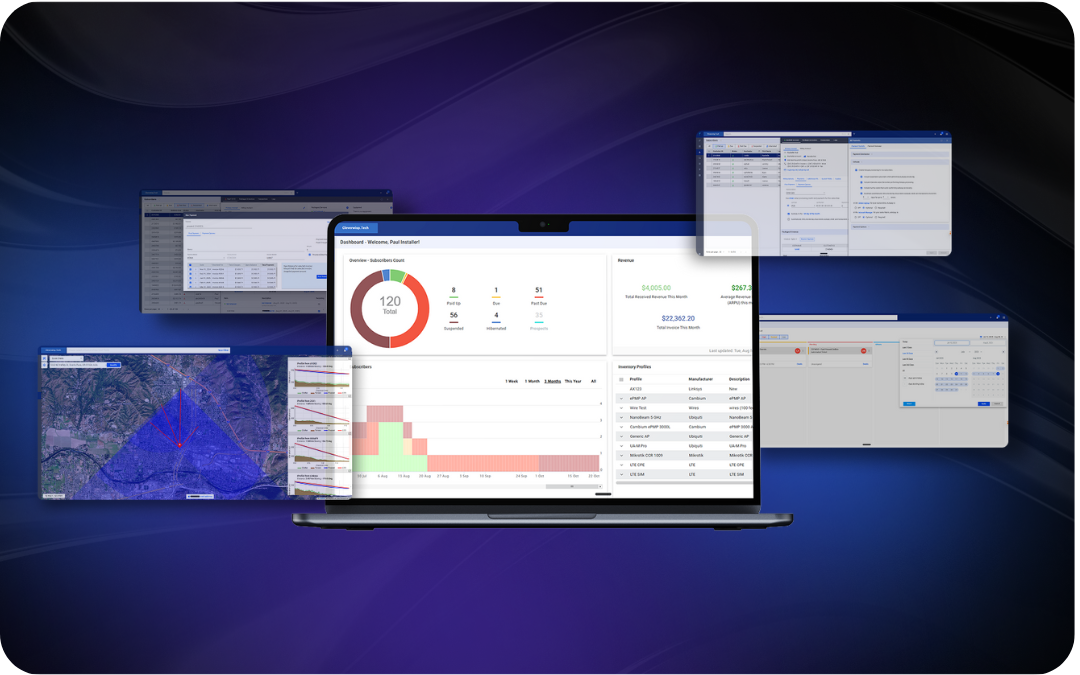I was invited to speak at the WISP Virtual Summit on the topic, “Designing your network for scalable growth.” So, I did like any great leader in my position does – I asked my wife what I should talk about.
“Well, you make a plan.” — Sarah Potter.
She’s so dead-on there, I can’t improve it. End of the story, let’s go home… right? It’s this simple but making the plan is still a challenge.
Start with a Business Plan
I really love Jeff Walker’s book Launch. Well, the obnoxiously long name is actually Launch: An Internet Millionaire’s Secret Formula to Sell Almost Anything Online, Build a Business You Love, and Live the Life of Your Dreams. This book isn’t about launching ISP services in a new market specifically, but the value of rapid and successful launches can’t be understated if you’re interested in scaling network growth.
The main word of wisdom that stuck with me from this book was knowing your market. Include your customers in creating your solutions as you make them. According to Walker, a “Launch” is a marketing strategy of engaging your customers as part of your planning and deployment. It seems like a simple concept, but here’s the twist – customers come as you create your WISP service instead of the old “make it and they will come approach.”
So how does a launch fit with a business plan, you might ask? Keep your business plan simple. Know your core values, your core focus, your marketing strategy, your 1-, 3-, and 5-year goals. If you don’t recognize this, then pick up the book Traction: Get a Grip on Your Business by Geno Wickman. I more than commend this book, it’s a must-read, and/or listen to it on Audible. With a simple and clear business plan, you can engage your market and tailor your services to your customers’ needs, specifically. Every healthy relationship is based on expectations being met and customer relationships are no exception.
Your investment goes a lot further with a well-executed launch strategy. To quote our CEO, Todd Grannis, “Gross is Vanity, Profit is Sanity and Cash is Reality”. So my first and foremost recommendation when creating a plan is to minimize your time to market and maximize your ratio of inbound to outbound cashflow. The combination of knowing your customers and engaging with them is a powerful component of a successful business.
Engineer Your Plan
You can map your physical deployment with tools like LinkPlanner free from Cambium Networks. Also, free for Visp customers is our mapping system which includes “what-if” scenario creation which can help you strike the balance between making commitments you can’t keep and waiting to get customer engagement until after you’ve deployed. However, be sure that the RF planning tool you use has clutter data because lots of commonly used systems don’t.
Plan your site and subscriber hardware, your backhauls and redundancies. Know what you will do when a site loses power. What will you do when the primary backhaul or other site equipment has issues? This means thinking carefully and systematically about capacity and redundancies.
If you’re already a WISP and you’re expanding, here’s a pop-quiz about your fourth pop site.
- What’s its peak daily throughput?
- What’s its maximum capacity?
- What’s its backup internet path capacity?
- What’s its site margin?
- What’s its runtime if power is cut right now?
- What’s its runtime if you can deploy your generator?
Work out Your Processes
Plan your support processes. You not only need a starting place, but you also need to plan on how to do more with less each time you take a step. I’m referring to planning your growth process. Again, I can recommend the Traction book which has a focus on getting the right people on your team, tracking the right data, improving your business weekly and quarterly. To scale it’s critical that you engage a whole team efficiently.
As you begin, your processes will be unpredictable, poorly controlled and reactive which is characteristic of a level 1 company according to the Capability Maturity Model Integration. Many companies stay small because they stay at this level. The second level is the “managed” level. Get there as soon as you can. You’ve arrived when your processes are planned, documented, performed, monitored and controlled at the project level. You’re not done, however, you can still have clear standards, procedures, tools and become proactive. Level 3 (Defined) companies are well defined and have proactive processes.
At this point, your processes are truly defined but there are still two more levels. When you can accomplish these, call +1 541-955-6900 to chat with a Success Engineer or ask for me. and I’ll give you the rest of the secrets. I say this to tease interest a bit but mostly it’s because you lose if you try to skip to the end. You can’t proceed to the next steps when you haven’t mastered the previous steps… things break down and fall through the cracks or don’t work in the first place.
Final thoughts on designing your network
So dig in. Many WISP’s haven’t achieved level 3 and they have 5,000 subs. However, if you make it to level 5 then nobody will be able to stop you from acquiring tens of thousands of subscribers.
Here is the funny thing, I gathered these notes to speak at an event on a topic I had spoken on before. I didn’t ask my wife last time and I spoke about the only ways to grow. I think this content may have been better, but this time the talk was ‘reloaded,’ meaning we used the same content and had a new Q&A. So, I get to share this with you now. I hope it brings you at least one big thing that changes your life.
To your success,
Joshaven
 Joshaven Potter
Joshaven PotterClient Advocate/Product Owner My passion is WISP development. For two decades I’ve been increasingly engaged in helping more WISPs reach higher levels of success. I began with network administration, engineering, software development and now also drive the conceptual and technical integrity of one of the industries leading billing and automation systems.











